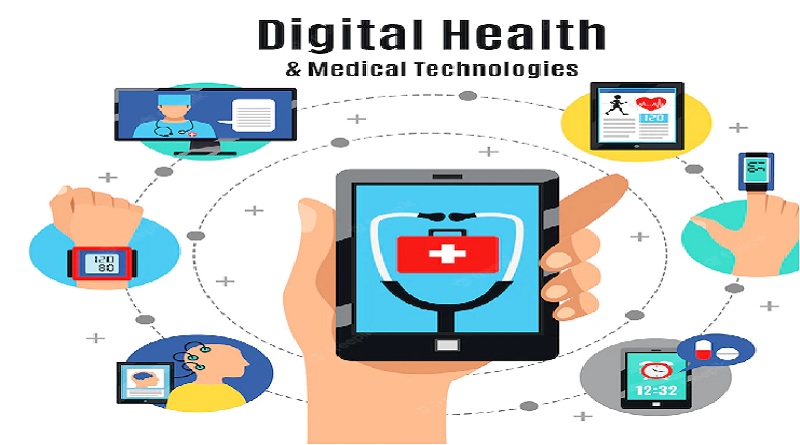Sometimes, paradigm shifts are only appreciated in hindsight. The healthcare industry recently experienced that kind of “easy to overlook” but “really big deal” accomplishment (to paraphrase President Joe Biden) when KLAS Research, the healthcare information technology sector’s most trusted market insights firm, established a new research category for data and analytics platforms.
Is that news yawn-inducing? Not if you’re in healthcare. For decades, healthcare’s foremost technological barrier has been access to clean, centralized, shareable data. The KLAS announcement acknowledges the arrival of cloud-based data and analytics platforms built specifically for that purpose and specifically for healthcare.
The impact is profound. The arrival of data and analytics platforms kicks open the door for a revolution in healthcare products, services, processes and business models. To understand why, think back to the early 2000s when cloud computing and advancements in data management catalyzed innovation across almost every industry—except healthcare.
Data platforms enable the continuous aggregation, processing and normalization of data from literally all available sources. That data can be centrally accessed, analyzed and put to use in limitless ways, applications, workflows, tools and solutions.
Without a data platform, services like DoorDash, Zillow, Venmo, Airbnb and Uber—or the “under-the-hood” processes that make most of the banking, finance, real estate, travel and entertainment conveniences possible—wouldn’t work.
Then there’s healthcare, which is always slow to join the digital innovation party. That’s not because there isn’t massive demand or forward-thinking innovators in healthcare. It’s because healthcare data is several orders of magnitude more complex than any other industry.
The Affordable Care Act catalyzed a wave of investment into electronic health record (EHR) systems. We thought EHRs would serve as healthcare’s core data platform, aggregating exabytes of data related to the patient and sharing that data across points of need. That didn’t happen. Instead, EHRs became billing systems for processing claims and facilitating reimbursement while storing that data in data warehouses that impede exchange.
That’s why it’s so difficult to access and share your personal records, lab results, medication history, scans and so on when visiting different doctors. It’s also why we don’t have the digital “on-demand” services in healthcare akin to the digital services we’re used to in every other aspect of our work and lives.
Despite those limitations, EHRs built a digital foundation that the new generation of healthcare data platforms are beginning to leverage. Unlike EHRs, cloud-based healthcare data platforms are not inert silos for storing data. They’re more like dynamic ecosystems that collect, clean and connect data and make it available for tools and systems to advance the digital transformation healthcare so desperately needs.
How does a healthcare organization start down that path?
An EHR implementation is a resource-consuming, comprehensive build that dominates the entire enterprise. However, a cloud-based data platform can start with a focused and manageable use case. Think of it as a minimally viable platform (MVP)—to adopt a term from the digital startup world—that harnesses a smaller but relevant subset of the total data available to the organization in service of a larger strategic vision: establishing an enterprise data platform.
The project owner is on a mission to change the organization’s operating culture and entice stakeholders toward a better, data-driven future. This starts by articulating the vision of the platform and the problems and inefficiencies it could solve before encouraging support and adoption for the project by showing how a data-driven culture can advance those goals.
Users should get on board as they experience how quickly the platform makes their work easier and gives them capabilities to overcome long-standing challenges. Early wins should be promoted and will get noticed. Because a data platform is easy to plug into by design, other tools can quickly be adopted.
For example, let’s say the IT team decides to make digital patient intake (DPI) the organization’s first data platform use case. Post-Covid-19, patients expect to spend minimal time in waiting rooms, and they’re already tired of giving the same information over and over at every clinical encounter. A DPI built on the data platform can make the intake process fast and efficient, easing patient frustration and administrative overhead.
More use cases can quickly follow, tapping the same data and adding to it. The patient’s clinical information can be funneled to physicians and nurses, giving them timely insights into patient care needs within their workflows. Communication channels—text and video—can be tied in to increase patient-clinician engagement and convenience.
Accurate insurance information can be tapped by the finance department to reduce denials and speed authorizations. The population health team can use the same unified data to flag at-risk patients and improve outreach and care coordination to ensure proactive interventions. Marketing can develop clinically contextualized digital outreach and engagement strategies. Business intelligence can apply analytics to improve workflows and reduce costs.
Old-school technology leaders may balk at a “land and expand” platform strategy that starts by addressing only a single key use case among the organization’s overall needs. However, as the number of use cases expands, tangible wins accumulate and more stakeholders experience the benefits of digital tools, the platform can accumulate even more data as a virtuous cycle of digital transformation accelerates. An enterprise data platform culture will result.
Until now, healthcare has been one of the few industries where technology has typically made life more difficult, not less. The emergence of healthcare data and analytics platforms can accelerate innovation in service, access, experience, administrative efficiency and clinical quality while giving patients and healthcare workers the digital experiences, convenience and insights they already enjoy in literally all other aspects of their work and life. Now, that can also be their healthcare experience.






